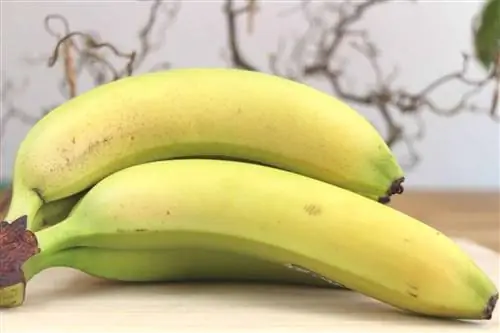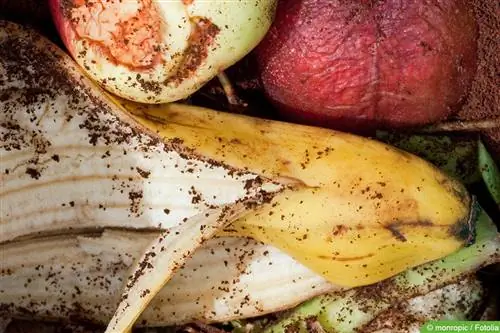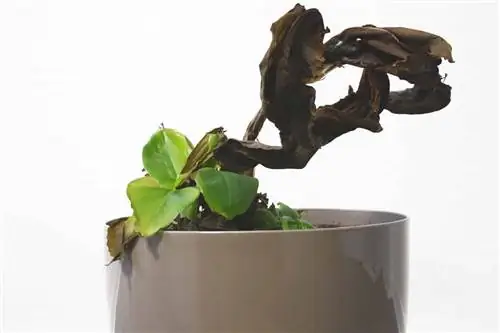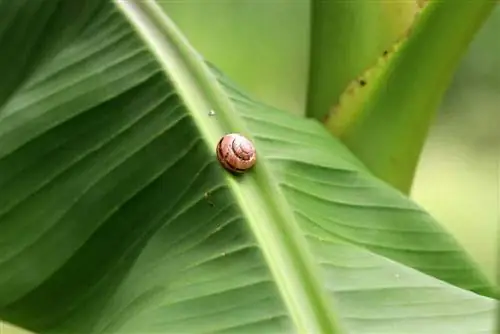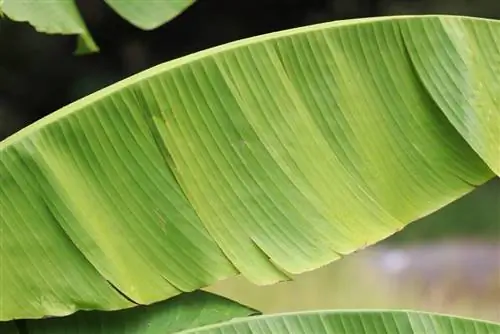- Author admin [email protected].
- Public 2023-12-17 03:39.
- Last modified 2025-01-24 12:45.
In order to grow, plants need regular nutrients. However, you don't have to use commercially available chemical fertilizers; you can also use home remedies and kitchen waste. This protects the environment and saves money at the same time. These 20 plants like banana peel as fertilizer.
Ingredients of the peel
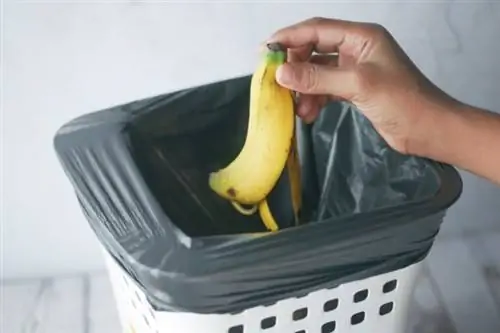
Banana peels are definitely too good for the trash! Although they are not suitable as a complete fertilizer for plants due to their low nitrogen content, they are a good supplement if the plants need a lot of magnesium or potassium. The shells also contain other valuable nutrients and trace elements. For optimal nutrient supply, you should plan around 100 g of banana peel (fresh weight) per plant as fertilizer. Houseplants and roses in particular love this fertilizer additive.
Preparing banana peels
Simply burying the entire bowl in the ground makes little sense. There are therefore various ways to prepare the banana peels for use as fertilizer.
- Cut the peel into small pieces and bury it fresh or dried in the ground.
- Boil the banana peel.
- Boil about 100 g peel with 1 liter of water
- let it steep overnight
- strain and dilute with 5 parts water
- Watering plants with the mixture

Note:
For longer storage, let the peels dry, if necessary chop/grind them and put them in tightly sealing jars.
Houseplants
Cyclamen (Cyclamen persicum)
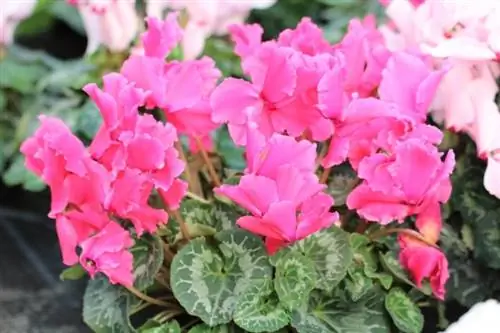
- Growth: tuberous plant; pushes new leaves and flowers out of the tuber after a rest period
- Location: not too sunny, rest period rather cool
- Care: do not water the tuber, keep it slightly moist during the flowering phase
- Fertilization: incorporate pieces of shell into the soil via the irrigation water or when repotting, do not fertilize during the dormant phase
Elatior begonia (Begonia x hiemalis)
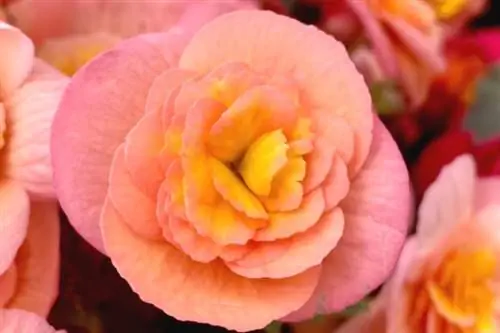
- Growth: tuberous plant; forms a compact perennial about 20 cm high
- Location: partially shaded, warm, protected on balcony
- Care: keep moist, not frost hardy outside
- Fertilization: incorporate pieces of shell when repotting and fertilize with irrigation water every two weeks
Orchids

- Growth: actually epiphytes, only a few are earth-bound; different leaves and flowers
- Location: no midday sun, but as bright as possible; high humidity
- Care: keep moist during the flowering phase, avoid roots getting wet; Use coarse, permeable substrate
- Fertilization: during the flowering phase with irrigation water
Room hibiscus (Hibiscus rosa-sinensis)

- Growth: shrub-like, up to 50 cm high, large flowers from March to October
- Location: as sunny as possible, over 20 degrees, a little cooler in winter
- Care: keep moist during flowering, do not let it dry out when resting
- Fertilization: weekly via the irrigation water and when planting, add shell pieces to the soil
Note:
The indoor hibiscus can also often be found in stores under the name “(Chinese) rose marshmallow”.
Vegetables
Eggplant (Solanum melongena)

- Growth: annual, bushy, up to 100 cm high
- Location: sunny, warm (possibly in a greenhouse), nutrient-rich soil
- Care: water regularly, tie up shoots, support the plant
- Fertilization: work banana peels into the soil when planting, later fertilize weekly with irrigation water or incorporate peels again
Cucumis (Cucumis sativus)
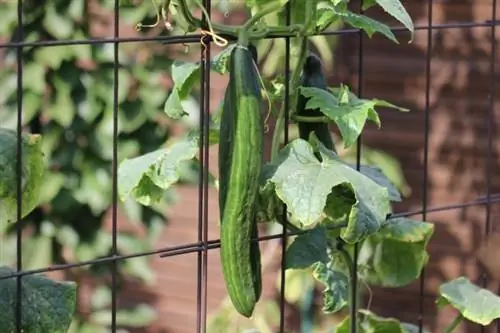
- Growth: annual, creeping or climbing; can form long shoots
- Location: as sunny as possible, protected from rain, possibly in a greenhouse, nutrient-rich soil
- Care: Mulch the soil, water regularly, tie up climbing varieties
- Fertilization: when planting, work pieces of peel directly into the soil, later add additional banana peels to the soil with the irrigation water
Potatoes (Solanum tuberosum)

- Growth: annual perennial; sprouts new shoots from planting potatoes
- Location: sunny, nutrient-rich soil, enough space
- Care: mound after planting; keep moist, but water from below
- Fertilization: fertilize sufficiently when preparing the bed, including incorporating the banana peels
Note:
Banana peels are suitable as fertilizer for potatoes, but since the tubers are usually grown on a larger scale, it is often not useful.
Celeriac (Apium graveolens var. rapaceum)

- Growth: forms tubers in the ground, up to 60 cm
- Location: nutrient-rich, sunny or partially shaded
- Care: keep moist, mulch, hoe
- Fertilization: heavy feeder; Incorporate fertilizer when preparing the bed, then continue to fertilize later via the irrigation water
Cabbage (Brassica)
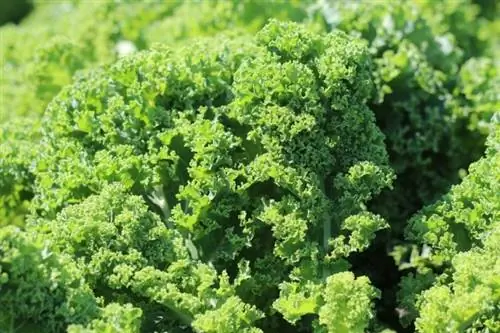
- Growth: annual, upright; depending on the variety up to 1 m high; large space requirement
- Location: sunny, airy; nutrient-rich, loose soil; partly very frost-resistant, harvest possible until winter
- Care: keep moist, mulch soil, hoe; pile up or support tall varieties
- Fertilization: heavy feeder; When planting or preparing the bed, dig in the banana peels and supply them with water later
Pumpkins (Cucurbita)
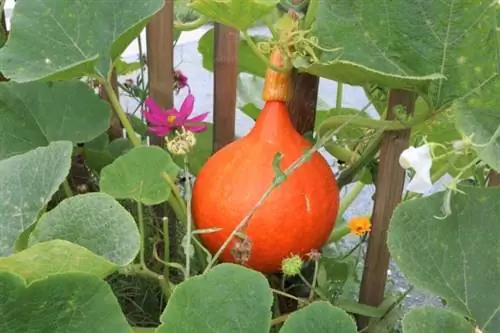
- Growth: annual, spreading plant; forms long, creeping shoots
- Location: as sunny, warm and nutrient-rich as possible
- Care: keep moist, mulch soil
- Fertilization: put a few pieces of banana peel into the plant hole when planting, continue to fertilize later via the irrigation water, greater fertilization from fruit formation
Carrots (Daucus carota ssp. sativus)
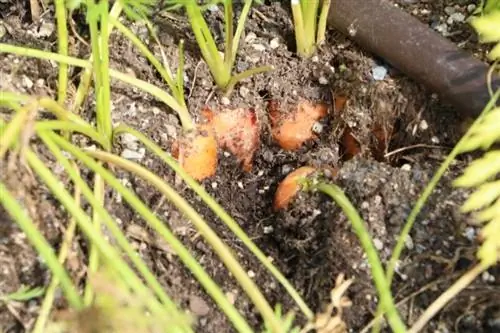
- Growth: annual cultivated root vegetables; forms turnip in the ground, blooms in the 2nd year
- Location: deep soil, sunny
- Care: keep moist, mulch, cover crop with net to protect against carrot fly
- Fertilization: medium feeder; Fertilize via irrigation water during growth
Peppers (Capsicum)
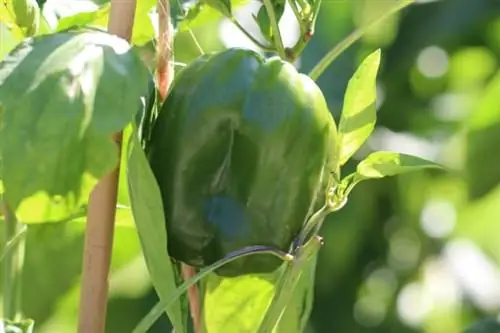
- Growth: annual, up to 100 cm high, bushy
- Location: sunny, warm; best in a greenhouse
- Care: keep moist; Thin out peppers that grow too densely
- Fertilization: when planting, put shells directly into the planting hole, later fertilize via the irrigation water
Parsnip (Pastinaca sativa)
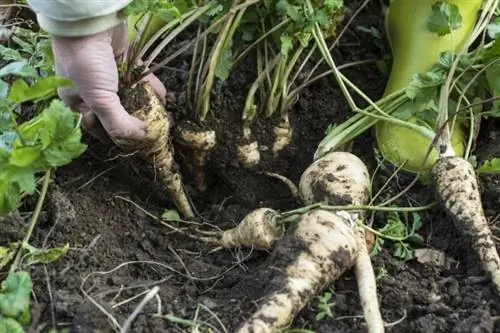
- Growth: annual cultivated root vegetables; forms turnip in the ground, would bloom in the 2nd year
- Location: deep soil, sunny or partially shaded
- Care: keep moist, mulch, hoe
- Fertilization: incorporate banana peels when preparing the bed, no further fertilization is necessary
Tomatoes (Solanum lycopersicum)
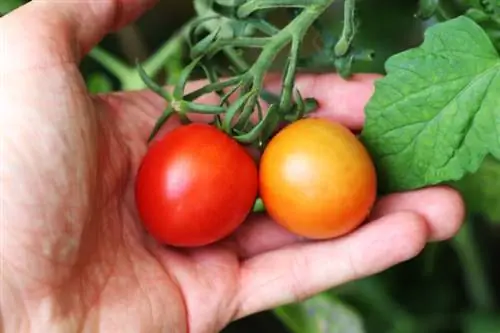
- Growth: annual; Stick or vine tomatoes
- Location: sunny, warm, protected from rain and too much wind; nutrient-rich substrate
- Care: keep moist, break out side shoots, tie regularly
- Fertilization: incorporate pieces of shell when planting, fertilize later with the irrigation water
Zucchini (Cucurbita pepo subsp. pepo convar. giromontiina)

- Growth: annual; Large space requirement, usually very productive
- Location: sunny, sheltered from the wind, nutrient-rich soil
- Care: mulch, keep moist
- Fertilization: when planting, later when watering
Flowering plants
Fuchsias (Fuchsia)
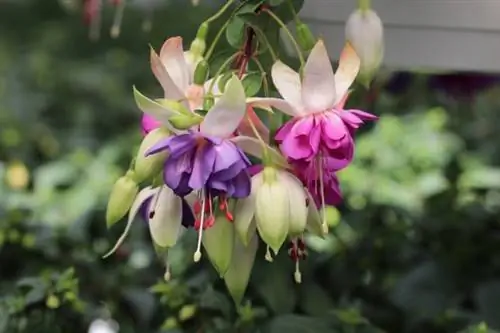
- Growth: mostly overhanging, floriferous; many colours; not hardy, has to overwinter indoors
- Location: semi-shady, shady; moist substrate, high humidity
- Care: keep moist but not wet; Remove faded flowers
- Fertilization: weekly in the flowering phase via irrigation water, pieces of shell in the soil when repotting
Geranium (Pelargonium)
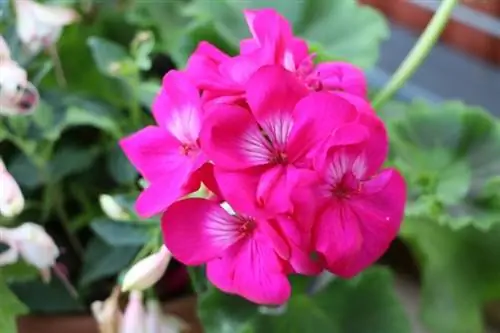
- Growth: bushy to overhanging; many colours; not hardy, overwinter indoors
- Location: sunny to partially shaded, protected from wind and rain; nutrient-rich, permeable soil
- Care: Avoid waterlogging, but still water regularly; Remove faded flowers
- Fertilization: incorporate banana peels when repotting, continue to fertilize with irrigation water during the flowering phase
Tip:
Geraniums are easy to propagate from cuttings.
Hydrangea (Hydrangea)
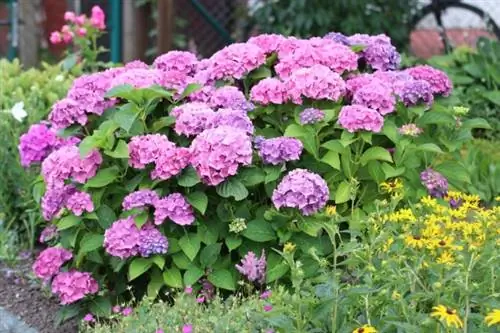
- Growth: shrub or climbing plant; large flowers in different colors
- Location: the sunnier the wetter; nutrient-rich, permeable, slightly acidic soil
- Care: Cover the ground with bark mulch, keep moist; cut back after flowering
- Fertilization: heavy feeder; Fertilize regularly, incorporate banana peels mainly into the irrigation water or into the soil
Roses (Pink)
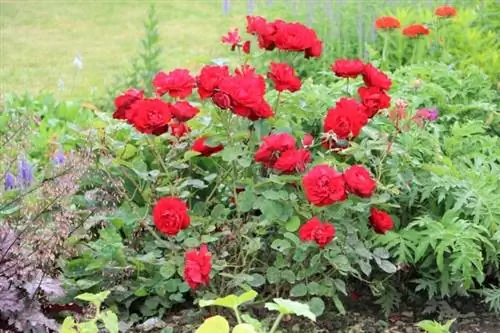
- Growth: depending on the variety, shrub or climbing roses, wild roses grow very large
- Location: sunny, nutrient-rich, permeable, deep soil
- Care: old roses need little care; cut back vigorously in spring; water young plants regularly; Hill up before winter to protect rhizome
- Fertilization: fertilize twice a year, in spring and early summer, incorporate shells into the soil
Sunflowers (Helianthus)
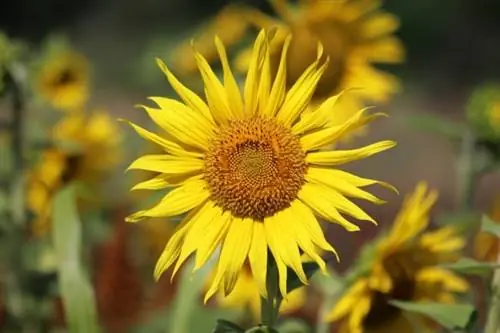
- Growth: depending on the variety up to 2 meters high, upright, large flowers from July to September, annual or perennial, perennials spread via rhizomes
- Location: sunny, nutrient-rich, permeable soil
- Care: tie up very large plants, mulch the soil, keep it moist, divide perennials after a few years, cut back in spring
- Fertilization: heavy feeder, put pieces of shell in the planting hole when planting, later fertilize via the irrigation water from the start of flowering
Frequently asked questions
Which plants don’t like fertilizer made from banana peels?
Basically, banana peels can be used for almost all plants. Since the nutrient content is not very high, over-fertilization is impossible. Nevertheless, there are some plants for which the bowls are not suitable, especially plants that do not like fertilizer, for example some succulents or herbs.
Can banana peels be put in the compost?
Like other fruit and vegetable scraps, banana peels can also be composted. However, if it is thrown whole into the compost, it will take a correspondingly long time to rot. In this case it is also better to chop up the peel and mix it with the other compost.
Is every banana peel suitable as fertilizer?
No, only organic bananas are unconditionally suitable as fertilizer. Peels from conventional bananas can be treated against fungi. This not only delays their decomposition, it can also affect the soil organisms.

